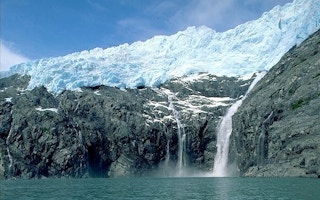Rising sea levels cannot be stopped over the next several hundred years, even if deep emissions cuts lower global average temperatures, but they can be slowed down, climate scientists said in a study on Sunday.
A lot of climate research shows that rising greenhouse gas emissions are responsible for increasing global average surface temperatures by about 0.17 degrees Celsius a decade from 1980-2010 and for a sea level rise of about 2.3mm a year from 2005-2010 as ice caps and glaciers melt.
Rising sea levels threaten about a tenth of the world’s population who live in low-lying areas and islands which are at risk of flooding, including the Caribbean, Maldives and Asia-Pacific island groups.
More than 180 countries are negotiating a new global climate pact which will come into force by 2020 and force all nations to cut emissions to limit warming to below 2 degrees Celsius this century - a level scientists say is the minimum required to avert catastrophic effects.
But even if the most ambitious emissions cuts are made, it might not be enough to stop sea levels rising due to the thermal expansion of sea water, said scientists at the United States’ National Centre for Atmospheric Research, US research organization Climate Central and Centre for Australian Weather and Climate Research in Melbourne.
“Even with aggressive mitigation measures that limit global warming to less than 2 degrees above pre-industrial values by 2100, and with decreases of global temperature in the 22nd and 23rd centuries … sea level continues to rise after 2100,” they said in the journal Nature Climate Change.
This is because as warmer temperatures penetrate deep into the sea, the water warms and expands as the heat mixes through different ocean regions.
Even if global average temperatures fall and the surface layer of the sea cools, heat would still be mixed down into the deeper layers of the ocean, causing continued rises in sea levels.
If global average temperatures continue to rise, the melting of ice sheets and glaciers would only add to the problem.
The scientists calculated that if the deepest emissions cuts were made and global temperatures cooled to 0.83 degrees in 2100 - forecast based on the 1986-2005 average - and 0.55 degrees by 2300, the sea level rise due to thermal expansion would continue to increase - from 14.2cm in 2100 to 24.2cm in 2300.
If the weakest emissions cuts were made, temperatures could rise to 3.91 degrees Celsius in 2100 and the sea level rise could increase to 32.3cm, increasing to 139.4cm by 2300.
“Though sea-level rise cannot be stopped for at least the next several hundred years, with aggressive mitigation it can be slowed down, and this would buy time for adaptation measures to be adopted,” the scientists added.










